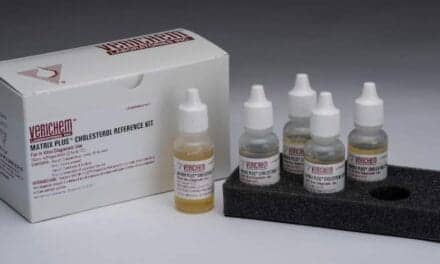Though not universal, it is an observable phenomenon that many in vitro diagnostic manufacturers and other suppliers to the clinical laboratory community schedule their product launches to coincide with the annual meeting of the American Association for Clinical Chemistry (AACC). Even companies that are not announcing entirely new products find a way to grab the limelight with the release of expanded menus and feature enhancements that often represent significant performance improvements over earlier releases.
This year’s AACC meeting did not disappoint, as readers can judge from the new products showcase in this issue of CLP. Many other new products and related announcements continue to be covered in CLP’s weekly e-newsletter, CLP Prime, where we often have space for longer stories about products that are new to the marketplace. Readers can sign up to receive CLP Prime at no cost by visiting the CLP website at www.clpmag.com.
CLP’s view of the marketplace doesn’t begin when products are first commercialized. As indicated by this issue’s article by researchers at Thermo Fisher Scientific and the Karolinska Institute on the development of diagnostics using exhaled breath, we’re also watching emerging technologies as they begin their march on the long road to adoption into everyday use.
Thermo and its research partners are not the only organizations working to develop diagnostic tools based on exhaled breath. In July, Owlstone Medical, Cambridge, UK, announced initiation of the PAN cancer trial for early detection of cancer in breath. According to the company, the large-scale clinical study will evaluate the use of Owlstone’s Breath Biopsy platform for the early detection of bladder, breast, esophageal, head and neck, kidney, pancreatic, and prostate cancers and brain tumors, with the ultimate aim of detecting cancer much earlier, when better treatment options are available and more lives can be saved.
The trial is being conducted in collaboration with a team of leading cancer researchers at the Cancer Research UK (CRUK) Cambridge Center at the University of Cambridge and Cambridge University Hospitals NHS Foundation Trust. The chief investigator is Rebecca Fitzgerald, MD, who is a chairholder and professor of cancer prevention at the University of Cambridge.
“New tools that can help to diagnose cancer earlier are urgently needed, and we are very pleased to collaborate with Owlstone Medical to evaluate Breath Biopsy for early detection,” says Fitzgerald. “The PAN cancer trial forms part of our early detection program, a flagship initiative of the CRUK Cambridge Center that aims to devise better means of detecting cancer and diagnosing it in the early stages, which can lead to improved outcomes for cancer patients.”
The PAN cancer trial will use Owlstone’s Breath Biopsy platform, which enables volatile organic compound biomarkers to be captured noninvasively from a breath sample, and analyzed with high sensitivity and selectivity. Patients with a suspected cancer diagnosis will be asked to give a breath sample in addition to undergoing routine tests. The breath samples will be collected using Owlstone’s CE-marked ReCIVA Breath Sampler, for shipment to the world’s first breath biopsy clinical laboratory for analysis. The trial will compare the breath samples of patients with and without cancer to assess whether reliable biomarkers for early diagnosis of cancer can be identified in breath.
We look forward to hearing more from all of the organizations involved in developing these new technologies. But you won’t need to hold your breath while awaiting the news—we’ll make sure that CLP readers get the scoop as early as possible.
Steve Halasey
Chief Editor, CLP
[email protected]
(626) 219-0199




